Experiments
The Shipwreck Diet
Studies conducted by the U.S. Army in the late 1940s sought to determine the minimum amount of food a person would need to survive if they were shipwrecked on a desert island.One of the oddities the researchers discovered was that if, for some reason, the shipwrecked person had to choose between steak and water, they should choose the water: "Protein has the effect of drying up the body. Therefore eating a steak on a desert island with little or no water available would probably be worse than eating nothing, depending upon how long rescue took."
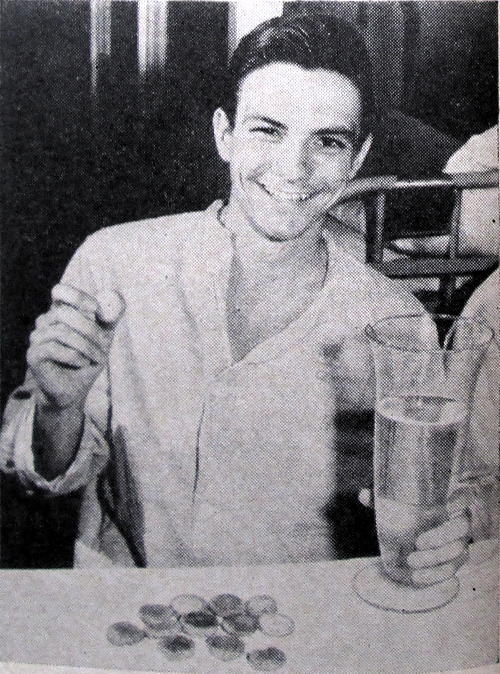
"Shipwreck Diet: One of eleven Army volunteers who for six weeks will live on biscuits and water at the Metropolitan Hospital, New York City, to determine a human survival ration."
Newsweek - Mar 15, 1948
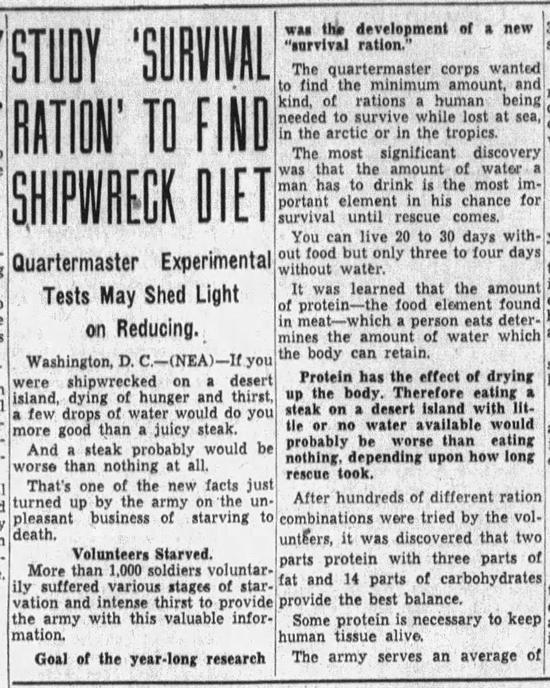
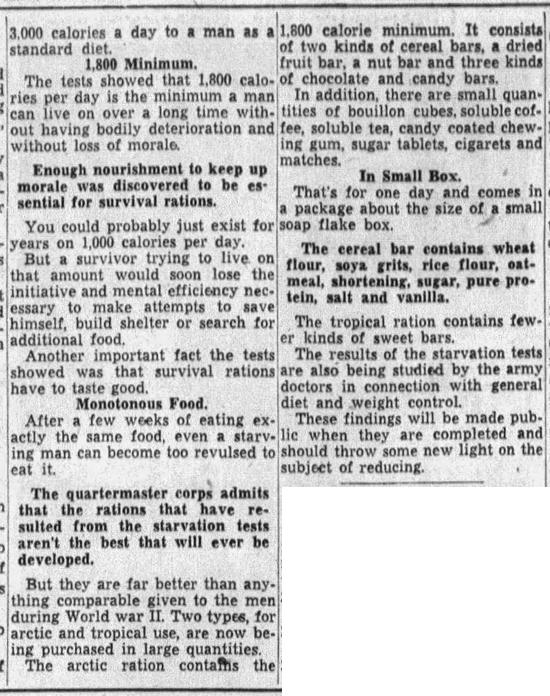
Waterloo Courier - Nov 16, 1949
Posted By: Alex - Mon Nov 16, 2020 -
Comments (4)
Category: Food, Nutrition, Experiments, 1940s, Dieting and Weight Loss
St. Louis Heat Experiment
Google Arts & Culture hosts a series of images showing a bizarre-looking experiment conducted at the St. Louis University Medical School in 1956. The photos were taken by Life photographer Albert Fenn.Google offers no more details about the photos, but some searching reveals the same photos on Getty Images where they're identified as "an experiment about the effects of heat on a body during highspeed jet flight."
Who the researcher was, I don't know.
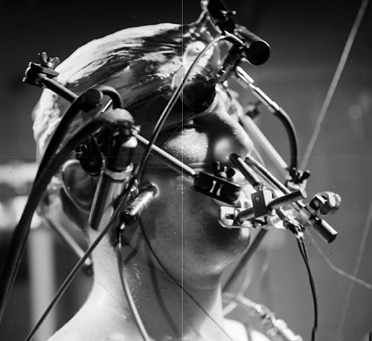
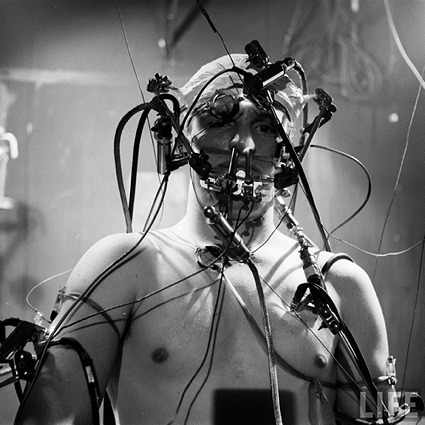
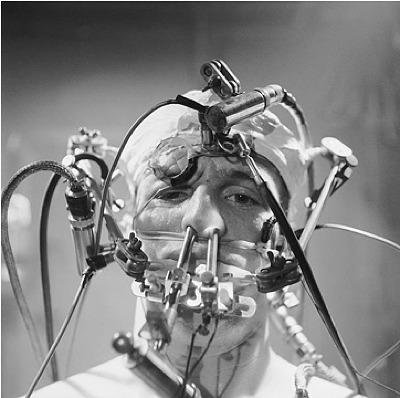
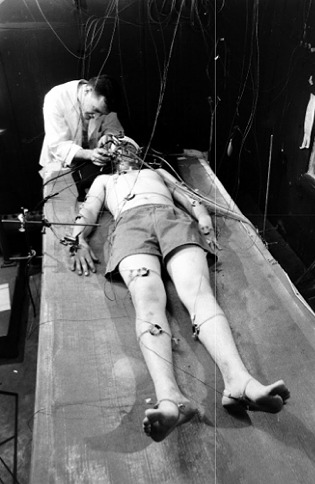
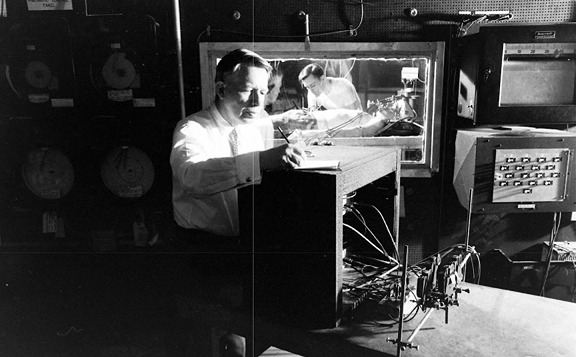
Posted By: Alex - Wed Oct 21, 2020 -
Comments (0)
Category: Experiments, 1950s
Farting in an operating room
If someone farts in an operating room, will he/she contaminate the room with germs? Dr. Karl Kruszelnicki and microbiologist Luke Tennent of Australia together devised an experiment to find out:Another source (below) claims that the 'colleague' who supplied the farts was, in fact, an eight-year-old boy:
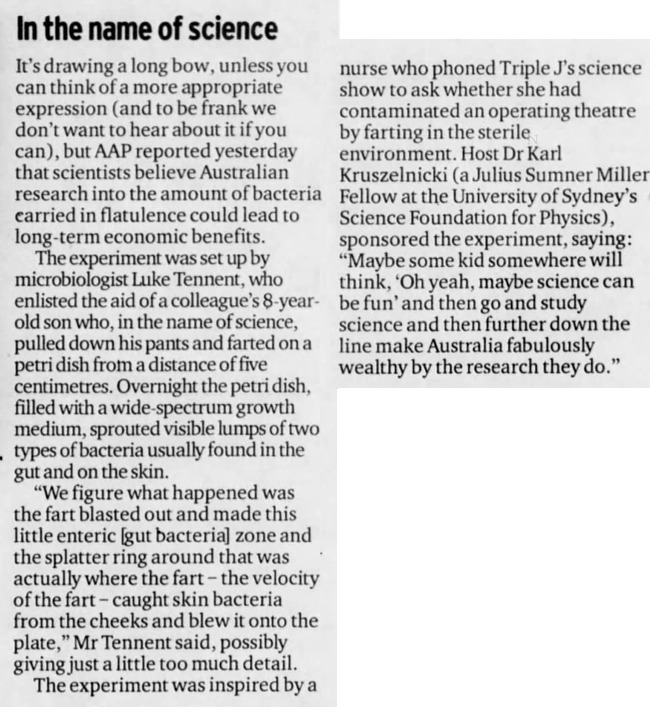
Sydney Morning Herald - July 16, 2001
Incidentally, Dr. Kruszelnicki has been mentioned before on WU. See 'falling cats'.
Posted By: Alex - Tue Jul 28, 2020 -
Comments (5)
Category: Hygiene, Flatulence, Experiments
Sugar Doping
1924: Despite being fed sweet hot tea and peppermint creams in an experimental attempt to increase their energy, the Yale soccer team lost to the visiting team by 5 to 1.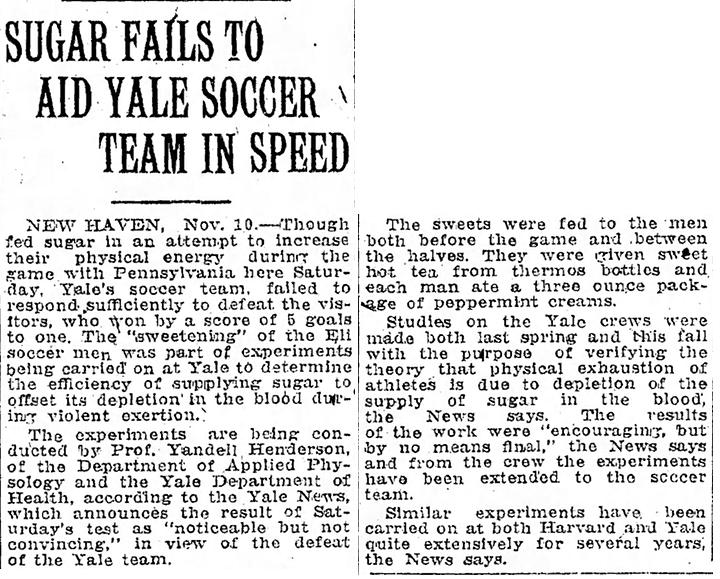
Bridgeport Telegram - Nov 11, 1924
Posted By: Alex - Wed Jun 10, 2020 -
Comments (0)
Category: Sports, Experiments, Junk Food, Nutrition, 1920s
Staring Hitchhikers
Will hitchhikers get more rides if they stare at oncoming drivers or if they look away? A 1974 study published in the Journal of Applied Social Psychology attempted to answer this question:In the stare conditions, E stared at the driver of the target vehicle and attempted to fixate on the driver's gaze and maintain this gaze as long as possible until the driver either stopped his vehicle or drove on. In the comparison conditions, E looked anywhere else but at the driver. Thus, on some trials E looked in the general direction of the car; on other trials E looked at his feet, the road, the sky, etc. Es were specifically instructed to neither smile nor frown, and to maintain a casual (neither rigid nor slouching) body postural orientation while soliciting rides.
The two hitchhikers were described as, "both 20 years of age and both dressed in bluejeans and dark coats. The male had short, curly blond hair, and the female, straight, shoulder length blond hair. Both could be described as neat, collegiate, attractive in physical appearance, and of an appropriate age to be hitchhiking."

A hitchhiker in Luxembourg - Aug 1977 (source: wiktionary.org)
(not one of the hitchhikers in the study)
Staring is often interpreted as a threat. So the researchers anticipated that staring at oncoming drivers might result in fewer rides. But the opposite turned out to be true. Which is a useful tip to know if you ever need to hitchhike. But what really helped get a lot of rides was being a single female. From the study:
Contrary to popular belief and hitchhiking folklore , it was no easier for a male-female couple to hitch a ride than a single male, and a mixed sex couple was less successful at soliciting rides than a single female hitchhiker. Although the generality of this conclusion is limited by the fact that it is based upon results obtained by one male and one female E, it is probably the case that couples are less successful hitching rides because of space limitations in the cars they approach. That is, it is more likely that the driver will have room for one additional passenger than that he will have room for two or more additional passengers in his car.
Incidentally, the experimenters never actually ever got in a car with anyone: "After a motorist stopped to pick up one of the hitchhikers, he was politely thanked and given a printed description of the nature of the experiment. No driver expressed any discomfort when he learned that the hitchhiker did not actually want a ride."
Posted By: Alex - Mon May 04, 2020 -
Comments (5)
Category: Science, Experiments, Psychology, 1970s, Cars
Can fear cure cancer?
In 1962, East German researchers conducted a bizarre medical experiment in an attempt to find out if fear could cure cancer. They inoculated some "mice, rabbits, rats, and cocks" with cancer cells. Then they put these animals into a cage which they lowered "into a zoo-like enclosure where 30 ravenous African polecats paced for food. The polecats would leap upon the little cage, shrieking and clawing at their hoped-for prey." This terror experience was repeated every two hours for several days.The result: the cancer cells grew more slowly in the terrorized animals.
Of course, this begs the question, what it is about fear that would fight cancer? Was it the elevated adrenalin levels? Or was there some other biochemical change that caused the effect?
Unfortunately, I can’t find any other details about this unusual experiment except for the brief news report below. I'm assuming there was never a human version of the experiment. Though one never knows, given some of the other stuff that researchers got up to behind the Iron Curtain.
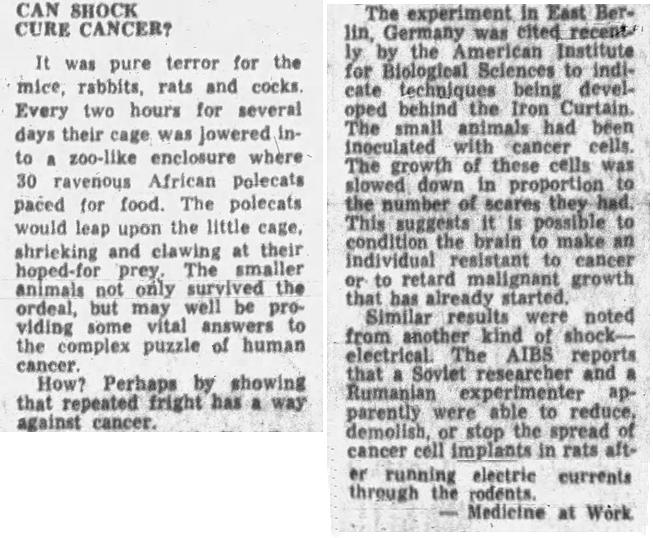
The Paterson News - Nov 7, 1962
Posted By: Alex - Fri Mar 27, 2020 -
Comments (0)
Category: Medicine, Science, Experiments, 1960s
Chewing Gum Stigma
In Oct 2013, the chewing gum company Beldent gathered five sets of identical twins. In each set, one twin was instructed to chew gum while the other sat motionless. Visitors to the Buenos Aires Museum of Contemporary Art were then asked questions about the twins.Their answers indicated that 73 percent of people had a more favorable impression of the gum chewing twins. Beldent claimed that this disproved the "chewing gum stigma."
Though I disagree. I think gum chewing does turn off some people. What the experiment showed was that there's an even greater stigma attached to being expressionless, showing no emotion at all
Posted By: Alex - Tue Dec 03, 2019 -
Comments (0)
Category: Experiments, Psychology, Candy
Strange Self-Experiments
I just added a top 10 list of strange self-experiments to the site.This is more material that I wrote a while ago, but which no longer has a home. So I'm relocating it permanently to WU.
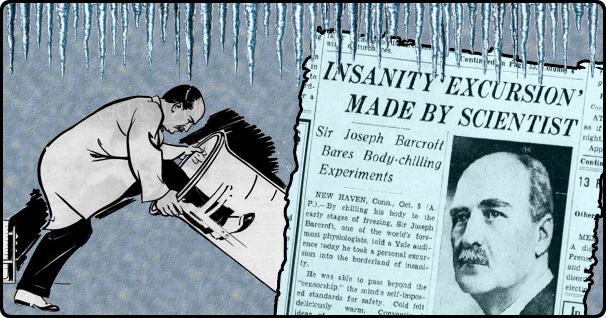
Posted By: Alex - Mon Sep 16, 2019 -
Comments (1)
Category: Science, Experiments
The Man Who Wanted to Sell Himself to Science
Like a lot of people during the great depression, William Bird of Jacksonville, Vermont had fallen on hard times. He was out of work, heavily in debt, and facing eviction. He feared he would soon be unable to feed his wife and three children. So Bird came up with a plan. He would sell himself to science.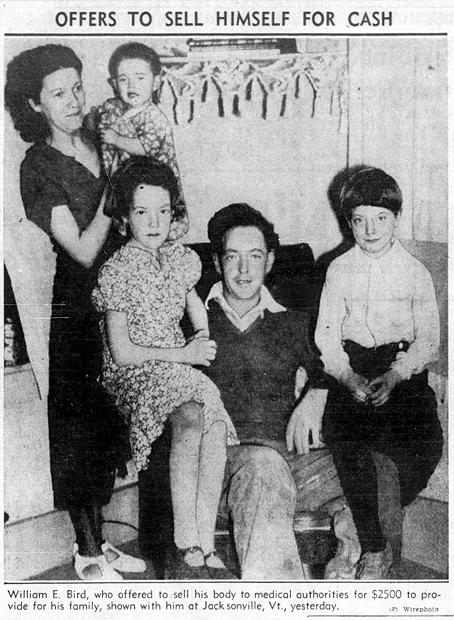
Los Angeles Times - Nov 15, 1936
He announced his offer in November 1936 by sending a letter to the local press. It read, in part:
If there is some doctor or group of doctors or scientists who’ll advance me $2500, I’ll agree to pay it back in two years. I have to sort of sell or mortgage myself because that’s the only security I can put up.
Now, if I failed to pay back the money when the time was up, I’d let them do anything they want with me. I’d let them try and kind of experiment on me.
Soon he sweetened the offer by specifying that it would be all right with him if he didn't survive the experimentation process. Naturally, his wife was opposed to the whole idea.
The media spread his unusual offer nationwide. Reporters noted that he was a prime physical specimen — six feet tall, 175 pounds, and a sturdy workman of good habits. In other words, excellent guinea pig material.
An anonymous Texan took sympathy on Bird and sent him $10. However, the scientific community wasn't tempted. No doctors took him up on his offer.
Although Bird didn't manage to sell himself as a human guinea pig, his story nevertheless had a happy ending. Within days of making his appeal, Bird was given a job on a construction project. He said, "I don't know who was responsible for giving me work, but I sure appreciate it." But he also noted that, despite now having a job, his offer still stood. He was still willing to sell himself to science, should some doctor ever want to take him up on it.
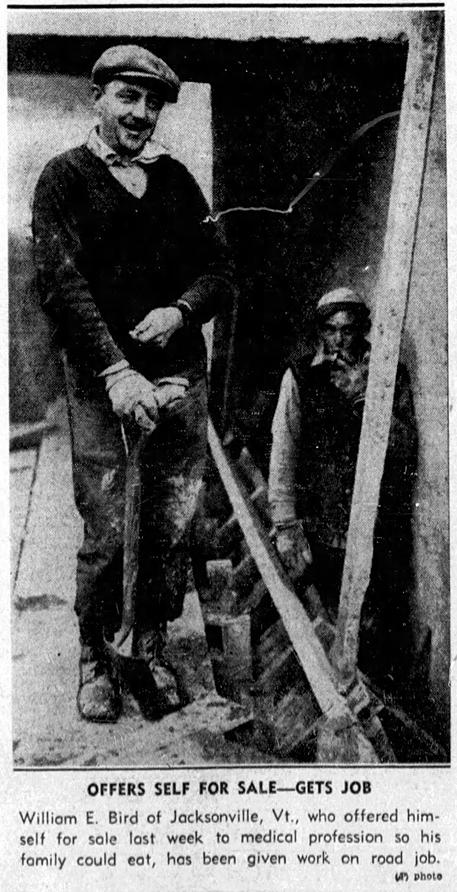
Los Angeles Times - Nov 18, 1936
Posted By: Alex - Mon Sep 09, 2019 -
Comments (2)
Category: Science, Experiments, 1930s
The Lice-Infested Underwear Experiment
During World War II, millions of men served their country by fighting in the military. Hundreds of thousands of others worked in hospitals or factories. And thirty-two men did their part by wearing lice-infested underwear.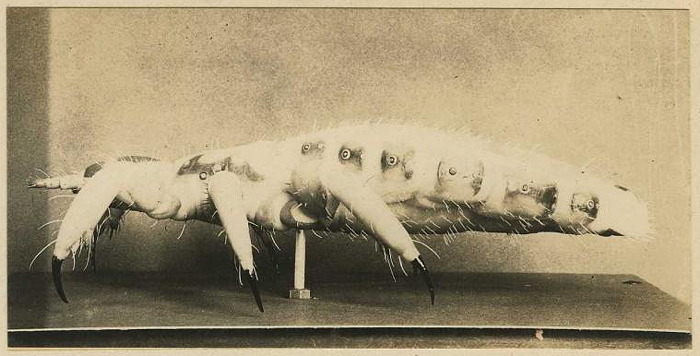
Model of a body louse, National Museum of Health and Medicine.
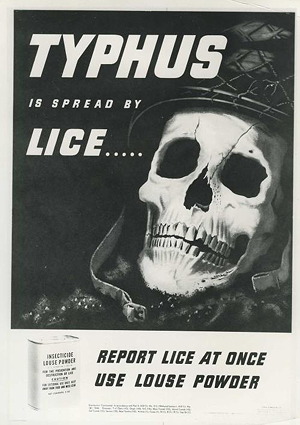
World War II public health warning
Source: Nat. Museum of Health & Medicine
In an attempt to prevent this, the Rockefeller Foundation, in collaboration with the federal government, funded the creation in 1942 of a Louse Lab whose purpose was to study the biology of the louse and to find an effective means of preventing infestation. The Lab, located in New York City, was headed by Dr. William A. Davis, a public health researcher, and Charles M. Wheeler, an entomologist.
The first task for the Louse Lab was to obtain a supply of lice. They achieved this by collecting lice off a patient in the alcoholic ward of Bellevue Hospital. Then they kept the lice alive by allowing them to feed on the arms of medical students (who had volunteered for the job). In this way, the lab soon had a colony of thousands of lice. They determined that the lice were free of disease since the med students didn't get sick.
Next they had to find human hosts willing to serve as subjects in experiments involving infestation in real-world conditions. For this they initially turned to homeless people living in the surrounding city, whom they paid $7 each in return for agreeing first to be infected by lice and next to test experimental anti-louse powders. Unfortunately, the homeless people proved to be uncooperative subjects who often didn't follow the instructions given to them. Frustrated, Davis and Wheeler began to search for other, more reliable subjects.
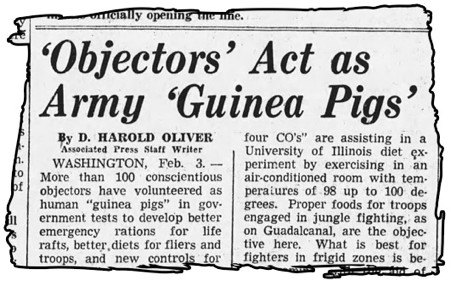
The Vancouver Sun - Feb 3, 1943
In theory, the COs were always given a choice about whether or not to serve as guinea pigs. In practice, it wasn't that simple. Controversy lingers about how voluntary their choice really was since their options were rather limited: be a guinea pig for science, or do back-breaking manual labor. But for their part, the COs have reported that they were often eager to volunteer for experiments. Sensitive to accusations that they were cowardly and unpatriotic, serving as a test subject offered the young men a chance to do something that seemed more heroic than manual labor.
Eventually COs participated in a wide variety of experiments, but Davis and Wheeler were the very first researchers to use American COs as experimental subjects. And they planned to infest these volunteers with lice.
More in extended >>
Posted By: Alex - Wed Sep 04, 2019 -
Comments (5)
Category: Health, Insects and Spiders, Experiments, Underwear, 1940s

| Who We Are |
|---|
| Alex Boese Alex is the creator and curator of the Museum of Hoaxes. He's also the author of various weird, non-fiction, science-themed books such as Elephants on Acid and Psychedelic Apes. Paul Di Filippo Paul has been paid to put weird ideas into fictional form for over thirty years, in his career as a noted science fiction writer. He has recently begun blogging on many curious topics with three fellow writers at The Inferior 4+1. Contact Us |




